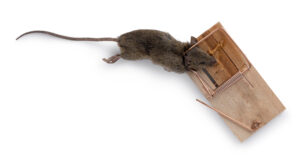Colorado’s ecosystems feature alpine forests, deserts, grasslands, and wetland regions that culminate in stunning landscapes.
Given the growing environmental concern not just in Colorado but nationally and globally, pest management in such varied landscapes calls for eco-mindful strategies that protect native flora, fauna, and beneficial critters.
In wide support for a healthier green planet, behold the eco-mindful pest control strategies that conform to the unique environmental needs of Colorado state.
Biological Controls
Biological pest management entails harnessing beneficial species in an attempt to manage pests without chemicals.

Eco-Friendly Pest Control Services in Colorado
The way to do that is to employ predators that feed on pests Colorado’s biodiversity offers many opportunities for this approach. For instance, ladybugs and green lacewings control aphids and whiteflies, while nematodes target soil-dwelling pests like grubs and root weevils. Setting up bird feeders or bat boxes can help attract predatory species like barn swallows and little brown bats that prey on mosquitoes.
Companion Planting
This is one technique that has been in use since time immemorial as a natural pest management strategy. It entails integrating garden plants and flowers with varieties that repel pests while attracting beneficial insects. Additionally, engaging native plants ensures the garden is better suited to local conditions, requiring fewer interventions. For instance, marigolds are a clever hack for ridding your garden and yard of nematodes and aphids. Another companion plant that works wonders in natural pest management is lavender, which deters moths, mosquitoes, and flies. Furthermore, native grass and wildflowers offer habitat for pollinators while reducing pest infestations.
Natural Sprays
Botanical sprays made of natural extracts from native trees and plants are used to manufacture insecticides and repellents that are safe for humans, pets, and non-target species. Some options suitable for Colorado include neem oil, peppermint and eucalyptus oil sprays, and diatomaceous earth. Neem oil is suitable for soft-bodies species like aphids while peppermint and eucalyptus oil sprays are effective for barring ants and spiders. These sprays come in handy in Colorado’s summer when
Physical Barriers
The use of physical barriers produces among the most effective sustainable pest management results. The strategy entails laying down barriers and deterrents along the areas of heavy infestation such as gardens and entry and exit points in the house. You can deter pest migration indoors by sealing entry routes such as gaps and cracks on siding to deter pests such as spiders, moths, and flies. It may also mean laying down traps to catch rodents before they find their way into the house. Exclusion techniques such as raw covers and netting can shield vegetables from birds and insects while copper tapes are a great option for repelling slugs and snails in damp areas.
Water Management
Given the various wetlands that comprise Colorado’s varied landscapes, mosquito infestation is a serious menace across the state. Eco-mindful measures reduce breeding grounds without harming other wildlife. Introducing mosquito-eating fish species like Gambusia that can thrive in ponds not only serves aesthetic purposes but also controls larvae. Larvicide Dunks is a bacterium for killing mosquito larvae without harming other wildlife. Draining standing water in containers and clogged gutters can also help control pest species like mosquitoes, houseflies, and frogs.
Seasonal Timing
Colorado’s climate varies greatly by region and season. Tailoring your pest management efforts to seasonal cycles ensures effective interventions. Monitor for ants, aphids, and rodents emerging from hibernation in spring. With pest activity being highest in summer, use natural repellents and sprays to control mosquitoes and garden pests. As warmth begins to diminish, signaling the onset of a cold season, most pests will try to find their way indoors, perfect timing for sealing cracks and gaps that may allow this migration. Managing cleanliness and storing food properly can greatly help manage pests as most species will come indoors looking for food during winter.
Mixed Strategies
Also known as IPM, this strategy focuses on deterring pests by understanding their behaviors and laying down environments that discourage their breeding, growth, or survival. This strategy combines numerous techniques including biological control, physical barriers, and habitat manipulation. Regular walkthroughs around your home go a long way in helping you identify and distinguish between beneficial and lethal species like ladybugs and lacewings. Understanding pest behavior helps Coloradans set action thresholds that include intervening only when pest populations reach levels that threaten plants or property, reducing unnecessary pesticide use.
By integrating biological methods, physical barriers, and natural repellents, you can manage pests without relying on lethal chemicals. These sustainable practices not only preserve native wildlife but also promote long-term environmental health.




